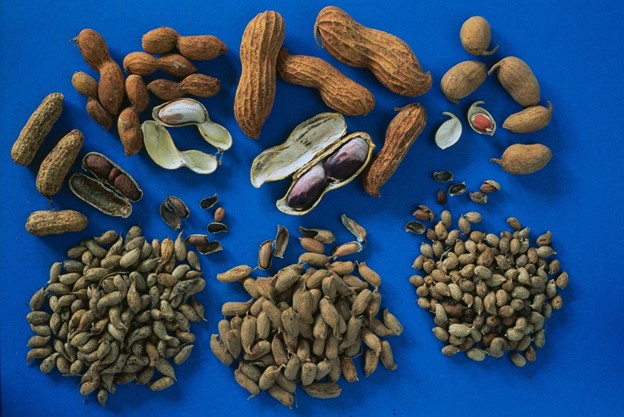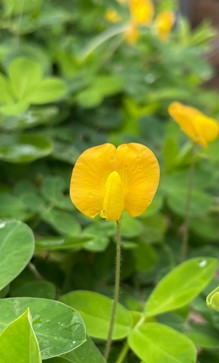While I was at my uncle's house this summer, I was looking after my 10-year-old cousin. He was enjoying his peanut butter and jelly sandwich and at a certain point he asked me:
“Where does peanut butter come from?â€
“From peanuts.â€
“Where do peanuts come from?â€
“From a peanut plant.â€
While he was satisfied and focused on his sandwich, I kept thinking about his questions. What did a peanut plant even look like? I could not stop myself from googling peanut plants. After swiping through a couple of pictures, a diagram of its life cycle caught my attention. I was surprised to learn that it had flowers above the ground whereas the peanuts were underground. This made me wonder – why is the peanut not like other plants where flowers and fruits occur at the same place, like tomatoes, apples, mangoes, and so many others? Are peanuts an exception like potatoes or like carrots? Such questions started to crowd up in my mind. So, like any nerd, I started to dig more into peanuts: their biology, their distribution, and even their evolutionary history. I learned that they were very different. And the most interesting fact was that the peanut we eat today is a jumbo version of a wild miniature peanut and humans played a very important role in that transformation.

Human ancestors from different parts of the world are responsible for the types of food we eat today. All of our food crops used to grow in wild habitats before human civilization and crop domestication began. Domestication is the evolution of wild species to crop plants through human selection. For example, corn was domesticated from a weed called teosinte. People started to select these crops for human-desired traits like fruit yield, plant height, and plant biomass. Normally, domestication of a crop would start within the original location of a wild species, and later the crops would get distributed throughout different places, mostly via humans trading and migration. Like any other crop, the peanut we eat today was also domesticated from wild species; but, interestingly, the modern peanut with large-sized nuts resulted from the combination of two separate small-nut-sized wild peanut species originating in two different locations in South America. During some natural pollination events, these two species formed a hybrid followed by a spontaneous whole genome duplication consequently forming a new species of peanut. There were other wild species in the area, but it was this particular combination that led to the modern peanut.

Now that I’d learned this much, I had to find out: how did these two species of wild peanuts from different locations come to the same place? The answer to this question gets a little complicated considering how peanut seeds are produced. A peanut plant produces its seed underground, but they are not like potatoes, which are modified stem tubers, or enlarged storage organs. Rather, they are developed from the flowers after fertilization occurs above ground. Peanuts have a unique mechanism to embed fertilized ovaries of the flower into the ground through a specialized organ known as the “pegâ€. The peg grows in the direction of gravity and penetrates the soil leading to the development of the peanut under the soil. The offspring germinates within a 1 m area of its mother plant next season. Because of this phenomenon, the seed dispersion rate is very low in peanuts. With this seed dispersal strategy, it would take over a thousand years for the seeds to move 1 km away from their origin under natural circumstances. Seeds along a riverbank might have a better chance to travel downstream, but even those would tend to remain near the river basin. Studies suggest that prehistoric people from South America (who used wild peanuts as a food source) transported a wild species into the range of another compatible wild species to facilitate hybridization 10,000 years ago. This action led these two wild compatible species to be in closer proximity, easing the process of species combination to form primitive modern peanuts. Thus began the process of peanut domestication to the peanut we know today.
Without this accidental help from prehistoric humans, the evolution of wild, mini seeded peanuts into jumbo, two-seeded peanuts might have taken more than 10,000 years or might not have happened at all. It was quite exciting to learn that humans played a crucial role in peanut evolution and domestication. I am thankful to my cousin for igniting the flame of curiosity in me about peanuts. And the best part: I have a very cool story for him the next time he asks about peanuts.



